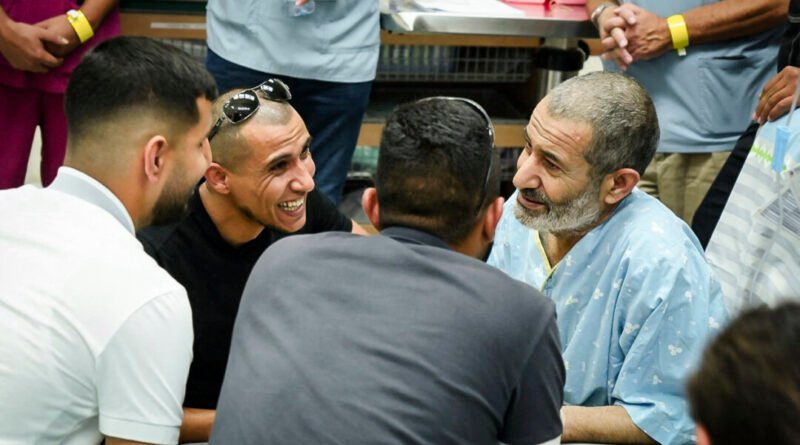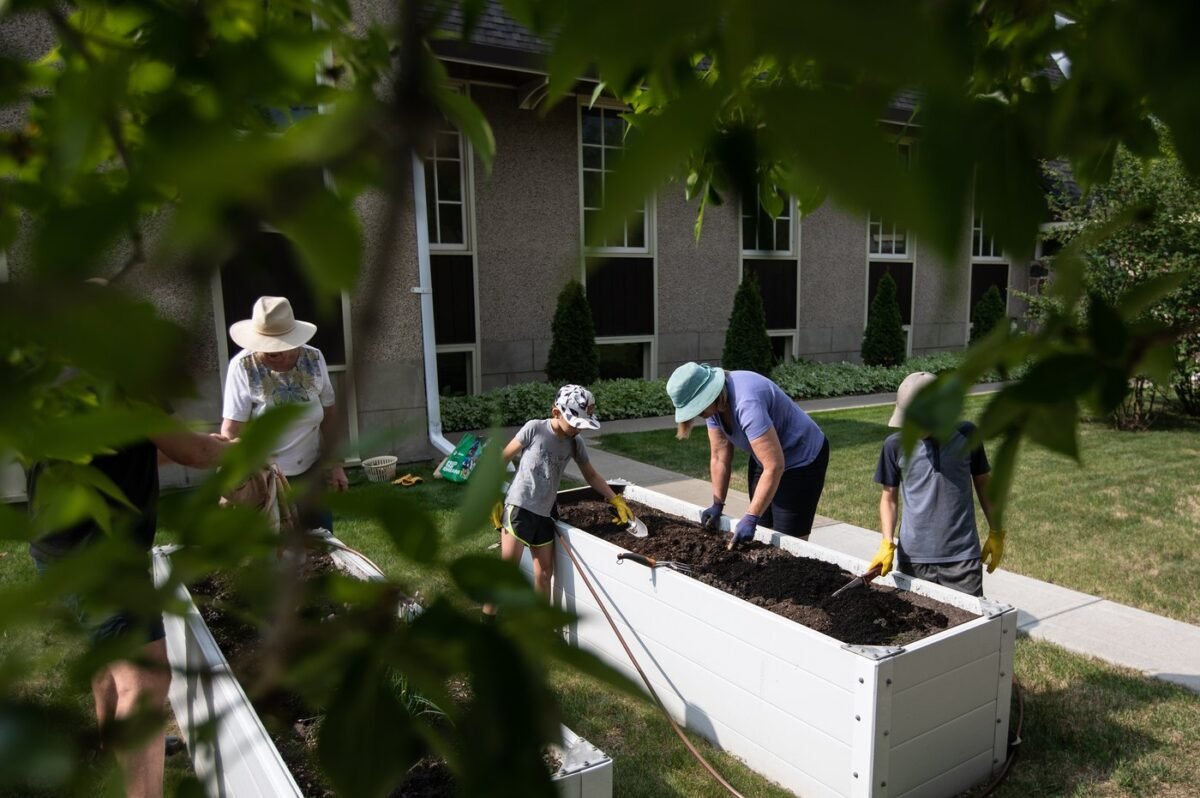Israeli Bedouins face opportunities and challenges as rescued hostage returns to the world.
The IDF’s daring rescue of an Israeli Bedouin from Hamas captivity was a stark reminder of the diverse minority population in the Jewish state.
RAHAT, Israel—The recent heroic mission to extract an Israeli hostage from a Gaza tunnel shed light on a lesser-known truth about Israel: not all residents are Jewish.
The rescued individual, Qaid Farhan Alkadi, a 52-year-old Israeli citizen, belongs to the Bedouin community.
Alkadi, although visibly impacted by his ordeal, managed to escape his captors in the tunnel and rushed towards the commandos. He was swiftly transported to safety, taken first by truck and then by helicopter to Soroka Hospital in Beersheba.
Alkadi was abducted while on duty as a security guard at a vegetable packaging plant near Kibbutz Magen, which was unfortunately destroyed on Oct. 7. He resides near Rahat, a significant Bedouin settlement in southern Israel, with his two wives and eleven children.
Bedouins, like other Israelis, found themselves entangled in the events of Oct. 7 when 3,000 Hamas terrorists launched an invasion.
Among the 1,200 casualties were 21 Bedouins, shared Wahid Elhosi’il, a retired lieutenant colonel from the Israeli army and a Bedouin himself, in a recent interview with The Epoch Times.
One of the 250 individuals taken captive included five Bedouins, with Alkadi being one of them. While two are believed to be alive, Hamas still holds the body of a third individual who perished in captivity.
Bedouin Heroes
Similar to Israeli Jews and other groups, the Bedouin community showcased its heroes on that fateful day, individuals who risked everything to save others. Elhosi’il, narrating through a translator, recounted these heroic tales to The Epoch Times.
One such figure was Yusuf Ziadna, a minibus driver at the Nova Music Festival, the site of several horrendous incidents where numerous lives were lost. Ziadna managed to pack 30 people into a minibus designed for 17, maneuvered off-road, and guided a convoy of fleeing vehicles through the fields to a safety zone 20 miles away, shared Elhosi’il. Along the way, he rescued wounded individuals.
Another hero was Remo Salman Elhosi’il, a cousin of Elhosi‘sil, who served as an off-duty policeman and one of the festival’s security personnel.
Remo Elhosi‘il commenced his responsibilities that day at 6 a.m. When the assault commenced around 6:30 a.m., he commandeered an abandoned vehicle and for seven hours ferried people to safety, repeatedly returning to retrieve more individuals from the danger zone, as per Wahid Elhosi’il’s account.
Wahid Elhosi’il, residing in Rahat, explored the opportunities and hurdles encountered by Bedouins in Israel’s contemporary society. Welcoming guests at his residence, where he resides with his family, he later extended an invitation to join his extensive family, comprising dozens of members, for dinner to break the Ramadan fast.
Opportunities, Challenges
Elhosi’il viewed enlisting in the Israel Defence Force (IDF) as a crucial opportunity. After discontinuing his education at 13 years to contribute to his family financially, a common narrative among Bedouin youth, he volunteered for military service at 19.

Qaid Farhan Alkadi, 52, an Israeli Bedouin rescued from Hamas captivity by the IDF, being flown in a military helicopter to Soroka Hospital in Beersheba on Aug. 27, 2024. Courtesy of the IDF
Choosing this path enabled him to complete his high school education, attend the IDF’s officer cadet academy, and progress in his career.
Although Bedouins are not obligated by Israel’s draft laws, approximately 400 of them volunteer annually, Elhosi’il informed The Epoch Times.
At his retirement after 23 years of service, Elhosi’il held the esteemed position of the highest-ranking Bedouin in the IDF, commanding the Desert Scouts, an all-Bedouin reconnaissance unit.
In his 50s now, he engages as a speaker, raising awareness about Bedouin concerns and the Arab community in Israel. He acknowledges the myriad challenges faced by this community.
Recognizing the necessity for improvements in education and services, Elhosi’il emphasizes Israel as a country for all its citizens, suggesting reforms to enhance overall welfare. He underscores the shared identity of Israeli citizens, whether Jewish or Arab, within the democratic framework.
Highlighting the preservation of Israeli identification among Arab citizens, Elhosi’il underscores the unity and shared future of all residents in the nation.
This Is Going to Take Some Time
The Bedouin, followers of Islam, possess a distinct historical journey compared to neighboring Arab populations. Remaining nomadic herders until the 20th century, some found themselves in present Israel following significant historical events. Oftentimes, they experienced more favorable treatment in Israel than in neighboring Arab states.
However, transitioning to modernity posed significant challenges for the community.
Roni Gilo, a retired IDF lieutenant colonel, recollected an anecdote from around 1980 when a young Bedouin soldier invited him home during his mandatory military service. Upon arrival, Gilo was surprised to find the soldier’s family residing in tents in the yard, with their sheep inside the house, even drinking from the toilet.
This transition to modern living, as Gilo’s friend aptly put it, is indeed a work in progress.

Bedouin women protest against a plan to evacuate the Umm Al-Hiran village, unrecognized by the Israeli government, near Beersheba in the Negev desert on Aug. 27, 2015. Ahmad Gharabli/AFP/Getty Images
Rahat, boasting a populace exceeding 79,000, serves as the largest Bedouin city globally. Elhosi’il’s lineage holds a unique element—his heritage is of African ancestry, with his forebears tracing back to African slaves owned by Bedouins, a narrative lost in antiquity.
The region recently witnessed an increase in employment opportunities, notably with Sodastream, a successful Israeli enterprise now under PepsiCo’s ownership, specializing in home carbonated beverage systems. Formerly situated in Ma’ale Adumim in the West Bank, catering to numerous nearby Arabs, the plant faced closure due to international pressures for boycotting products from the West Bank. In 2015, a new facility opened in the Idan Ha’Hegev industrial park adjacent to Rahat. Approximately 1,400 individuals, many Bedouins from Rahat, are employed there.
Illegal Encampments
For Bedouins adhering to conventional educational pathways and pursuing mainstream endeavors, Israel presents ample opportunities, Elhosi’il declared. He highlighted numerous Bedouins who graduated from universities, embarking on promising careers spanning various sectors from healthcare to finance, education, and law enforcement.
However, socio-economic constraints, lack of educational fulfillment, and rising crime levels hinder many from achieving their full potential. Not all Bedouin communities in Israel reside in modern dwellings.
Many, including Alkadi, dwell in unauthorized encampments devoid of basic amenities like electricity, water, or sewage systems.
Characteristic scenes in southern Israel include mobile homes clustered near roads, shadowed by aged vehicles, debris, and accumulated refuse. Limited access to adequate shelters or warning systems exacerbates the vulnerability of these individuals during Hamas rocket assaults.
Efforts from the Israeli government aim to dismantle such eyesores and relocate their occupants to legalized Bedouin townships like Rahat.
Residents of Karkur, Alkadi’s village, resist the notion of relocation to urban hubs, preferring rural lifestyles, shared Muhammad Abu Tailakh, the head of Karkur’s local council and a public health lecturer at Ben Gurion University, located near Beersheba.
Tailakh advocates for the recognition of Karkur, established since the 1950s. While the Israeli government designates it as a protected forest area, Tailakh suggests relocating the community to another site, excluding urban hubs.
Since November, the government notified nearly 70% of Karkur residents of impending demolitions. In light of Alkadi’s return, his family was spared from receiving a similar notice.
The Associated Press and Reuters contributed to this report.




